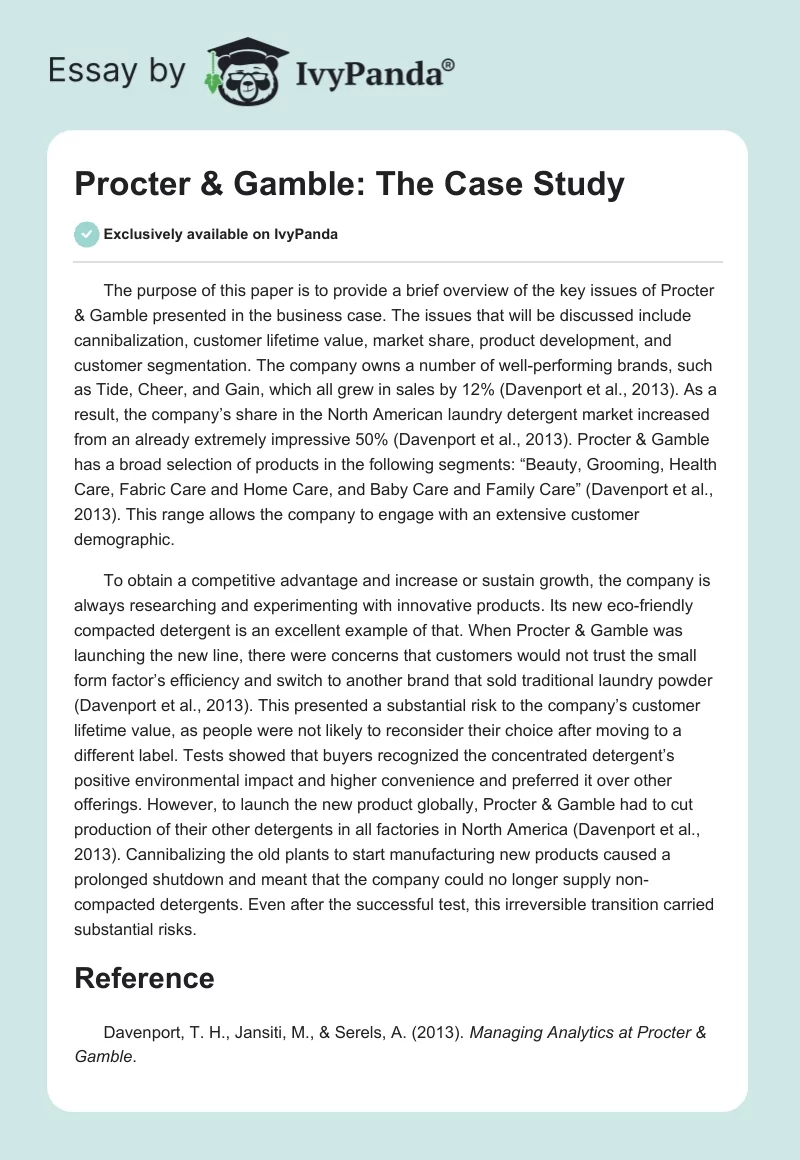The purpose of this paper is to provide a brief overview of the key issues of Procter & Gamble presented in the business case. The issues that will be discussed include cannibalization, customer lifetime value, market share, product development, and customer segmentation. The company owns a number of well-performing brands, such as Tide, Cheer, and Gain, which all grew in sales by 12% (Davenport et al., 2013). As a result, the company’s share in the North American laundry detergent market increased from an already extremely impressive 50% (Davenport et al., 2013). Procter & Gamble has a broad selection of products in the following segments: “Beauty, Grooming, Health Care, Fabric Care and Home Care, and Baby Care and Family Care” (Davenport et al., 2013). This range allows the company to engage with an extensive customer demographic.
To obtain a competitive advantage and increase or sustain growth, the company is always researching and experimenting with innovative products. Its new eco-friendly compacted detergent is an excellent example of that. When Procter & Gamble was launching the new line, there were concerns that customers would not trust the small form factor’s efficiency and switch to another brand that sold traditional laundry powder (Davenport et al., 2013). This presented a substantial risk to the company’s customer lifetime value, as people were not likely to reconsider their choice after moving to a different label. Tests showed that buyers recognized the concentrated detergent’s positive environmental impact and higher convenience and preferred it over other offerings. However, to launch the new product globally, Procter & Gamble had to cut production of their other detergents in all factories in North America (Davenport et al., 2013). Cannibalizing the old plants to start manufacturing new products caused a prolonged shutdown and meant that the company could no longer supply non-compacted detergents. Even after the successful test, this irreversible transition carried substantial risks.
Reference
Davenport, T. H., Jansiti, M., & Serels, A. (2013). Managing Analytics at Procter & Gamble.

